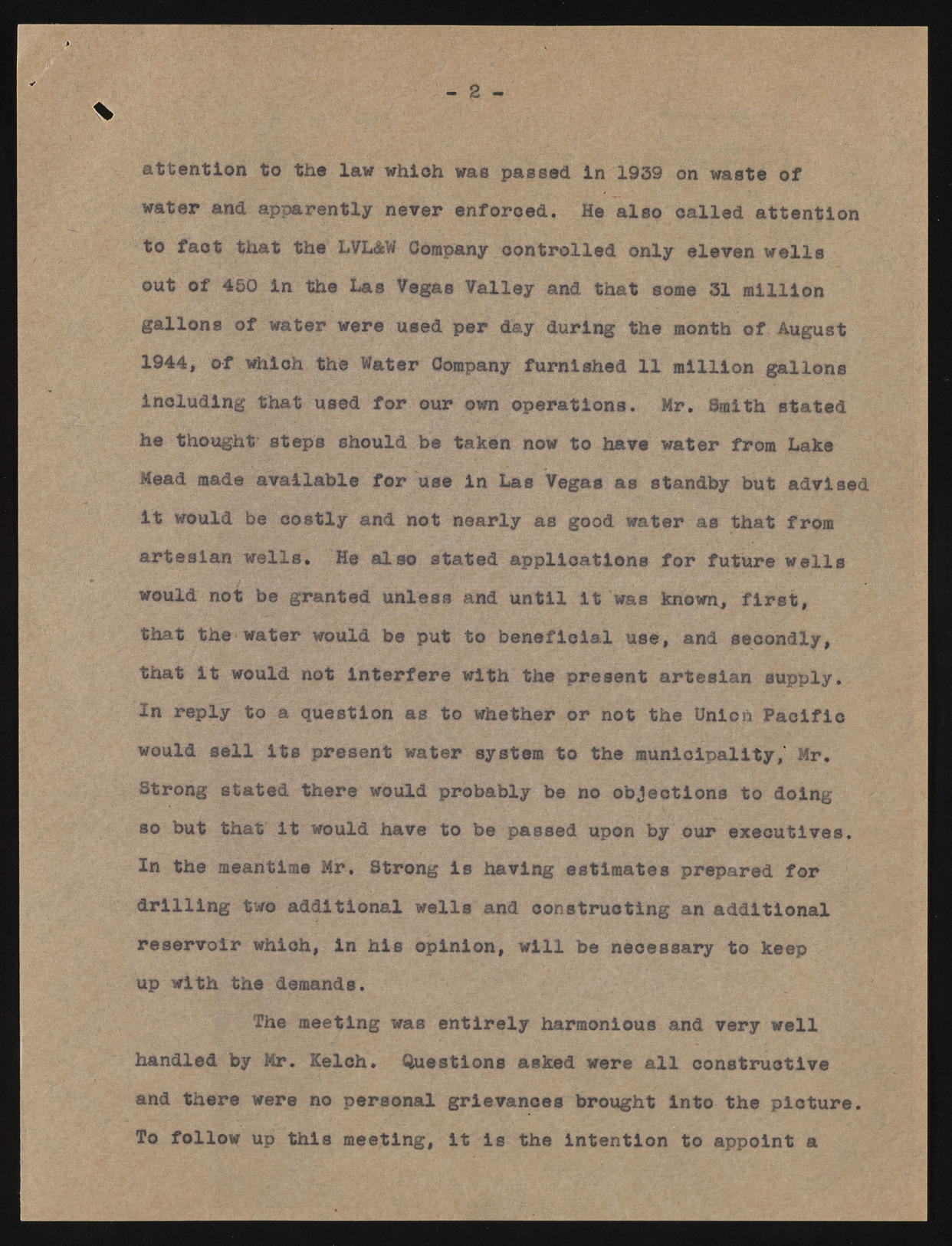Copyright & Fair-use Agreement
UNLV Special Collections provides copies of materials to facilitate private study, scholarship, or research. Material not in the public domain may be used according to fair use of copyrighted materials as defined by copyright law. Please cite us.
Please note that UNLV may not own the copyright to these materials and cannot provide permission to publish or distribute materials when UNLV is not the copyright holder. The user is solely responsible for determining the copyright status of materials and obtaining permission to use material from the copyright holder and for determining whether any permissions relating to any other rights are necessary for the intended use, and for obtaining all required permissions beyond that allowed by fair use.
Read more about our reproduction and use policy.
I agree.Information
Digital ID
Permalink
Details
More Info
Rights
Digital Provenance
Publisher
Transcription
attention to the law which, was passed In 1939 on waste of water and apparently never enforoed. He also called attention to fact that the LVL&W Company controlled only eleven wells out of 450 in the Las Vegas Valley and that some 31 million gallons of water were used per day during the month of August 1944, of which the Water Company furnished 11 million gallons including that used for our own operations. Mr. Smith stated he thought steps should be taken now to have water from Lake Mead made available for use In Las Vegas as standby but advised It would be costly and not nearly as good water as that from artesian wells. He also stated applications for future wells would not be granted unless and until it was known, first, that the water would be put to benefioial use, and secondly, that it would not Interfere with the present artesian supply. In reply to a question as to whether or not the Onion Pacific would sell its present water system to the municipality,' Mr. Strong stated there would probably be no objections to doing so but that it would have to be passed upon by our executives. In the meantime Mr. Strong is having estimates prepared for drilling two additional wells and constructing an additional reservoir which, in his opinion, will be necessary to keep up with the demands. The meeting was entirely harmonious and very well handled by Mr. Keloh. Questions asked were all constructive and there were no personal grievances brought into the picture. To follow up this meeting, it is the intention to appoint a

